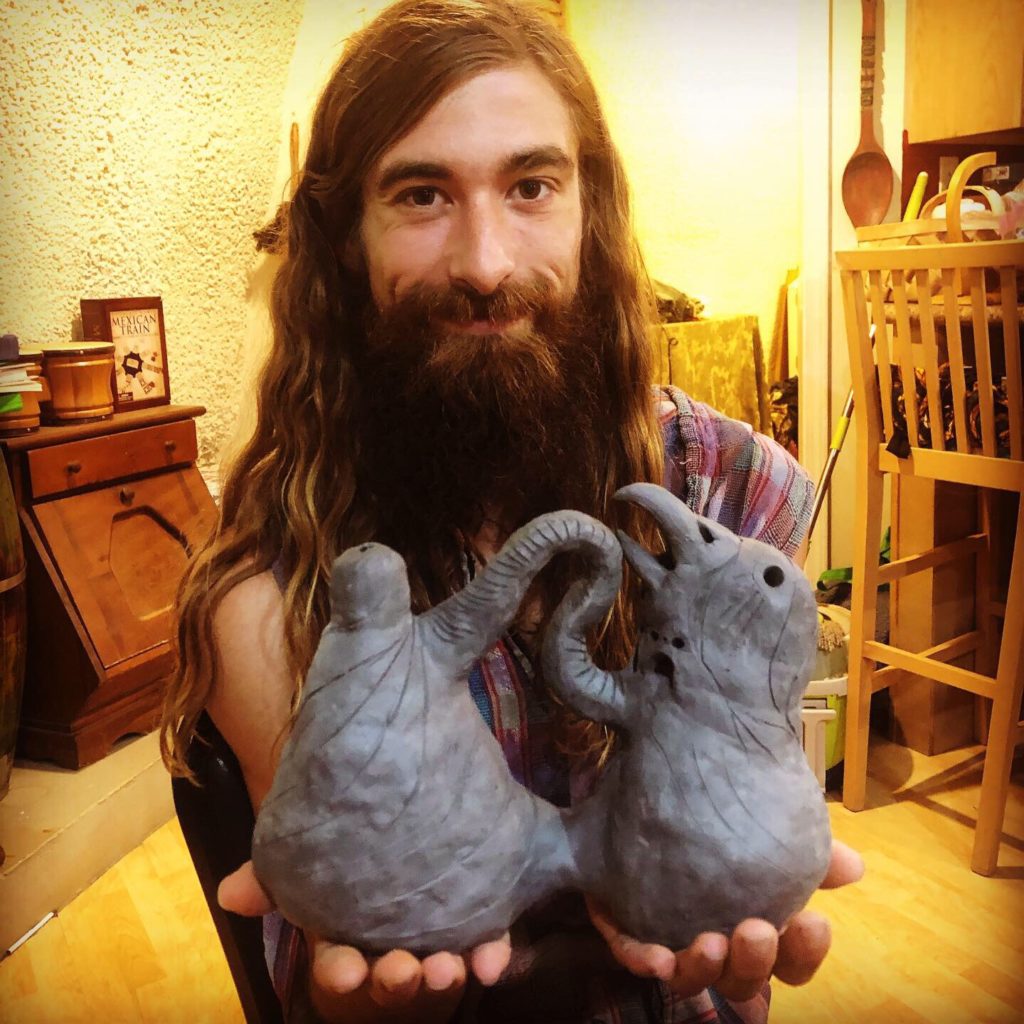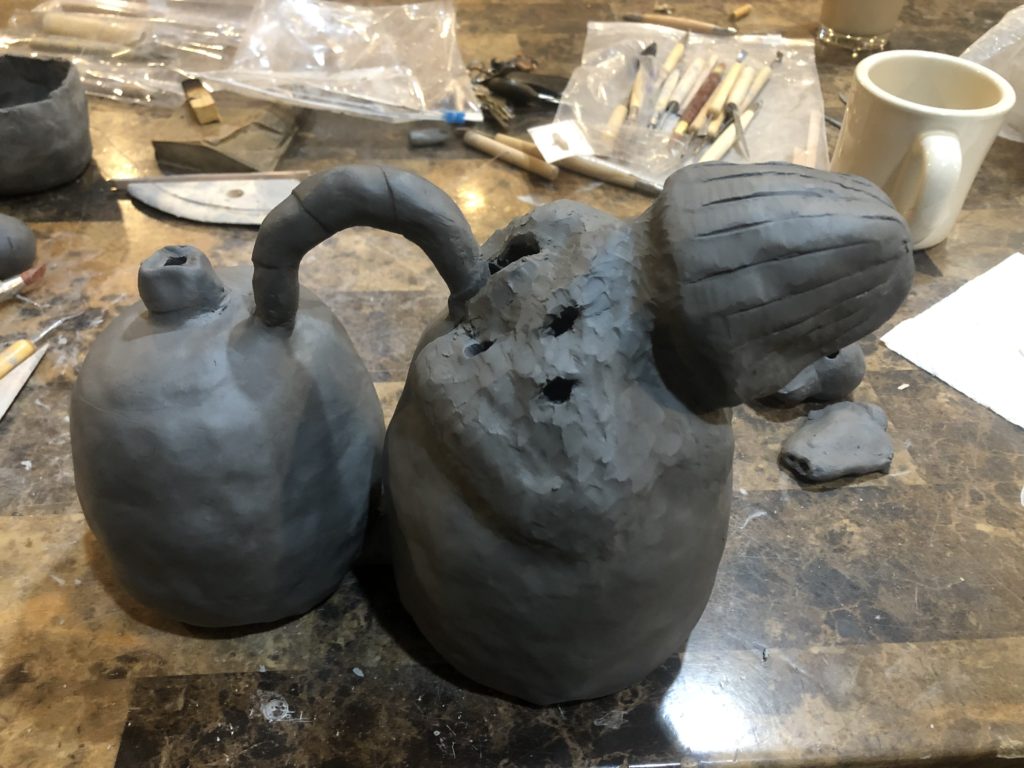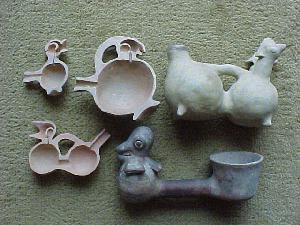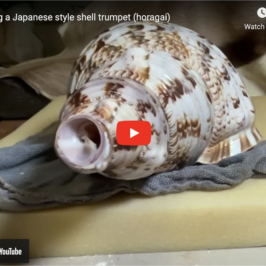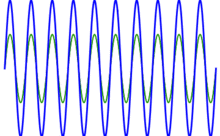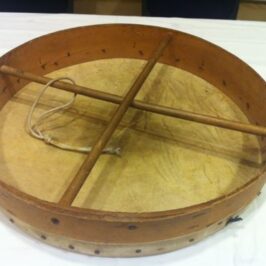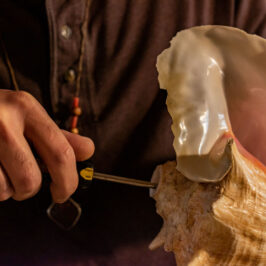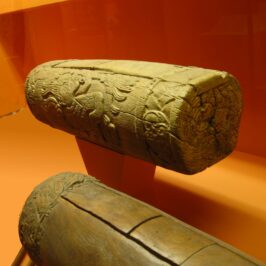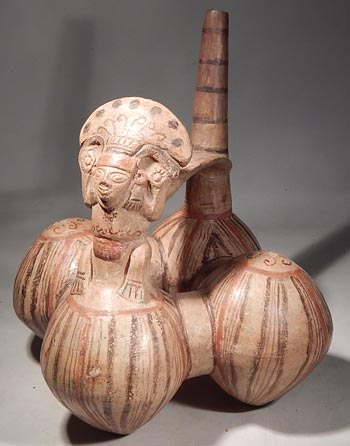
These unique instruments, or shamanic tools as we will later discuss, are called whistling vessels or otherwise known in Spanish as huaco silbadors. Most of the original vessels are estimated to have been made around 500 BC – 1200 AD, and a majority of them have been found in Peru.
This article will discuss the origin of these intriguing pieces, what they were used for, how they work and the future of whistling vessels.
Since first laying eyes on these instruments in a YouTube video many years ago, I have been slightly obsessed with them. These beautiful art pieces, which can be found in many museums, are usually unique in exterior design, but fairly similar with functional construction of the mechanisms for producing sound.
HISTORY OF WHISTLING VESSELS
When these vessels were first found, anthropologists initially thought they were nothing more than ornate liquid containers. For many hundreds of years that is exactly what they were displayed as in many museums and private collections. Most of these vessels were found within burial grounds or sacred places, probably as offerings to those who passed or the many gods those cultures venerated, finding them in these locations confirms the sacred reverence for these objects. Many of these vessels have been dated from 500BC to around the time of the Spanish conquest of Mesoamerica in 1532. These vessels were not specific to one culture, but have been connected to a few different cultures such as the Inca and Moche.
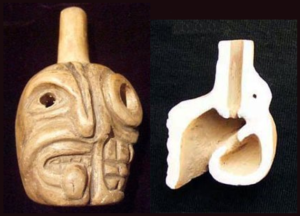
Based on findings, it seems that the clay instrument niche was extremely expansive in the pre-columbian cultures that these vessels have be found in. The process of producing this technology started with simple whistles around 2000 BC, then proceeds to advanced flutes around 1000 AD, finally the breath blown whistling vessels come right before the vessels that utilize water movement to produce sound around 500 BC. Most of these technologies and techniques were either lost or dramatically hidden after the Spanish conquest, since the sacredness of these objects and their uses was considered devil worship to the Catholic perspectives of the Spanish invaders.
From what we know, or have concluded based on analysis, these objects were used as shamanic tools used in ceremony by the ancient cultures who made and utilized them.
I continue to believe that what the Andean shaman/priests were doing with these instruments remains to be re-discovered. Certainly, they are a remnant of a lost art. In all likelihood, they are part of a psycho-spiritual tradition, an element in a technology of sound that disappeared along with the Inca Empire in the 16th century.” Daniel Statnekov

In 1972 Daniel Statnekov was at a estate auction which a unique vessel caught his eye, and the fate of these instruments was destined from that day on. Daniel Statnekov seems to be the first person in the “civilized” western world that figured out what these sacred vessels where. Up until that time most knew these as nothing more than ornate liquid containers, as was mentioned above. It seems Statnekov had the great idea of blowing into the end of one, and from that point on dove head first into the mystery of these objects. Daniel Statnekov’s book, “Animated Earth: the whistling jugs of Pre-Columbian Peru”, details his exploration into the subject and his discoveries and theories.
Regardless of what a person hears, the resulting experiences are always transformative, moving people deeply into or toward something that they seek. And, by entering into the process with a clear intention, people usually find themselves progressing quickly in the areas of healing, transformation and manifestation. Steven Sieden

THE TECHNOLOGY
When closely tuned vessels are played together they can create binaural frequencies. These frequencies can be used to induce trance states, which can lead to numerous positive responses. This technology alone is amazing, then when you start to realize the complexity of these vessels the advancement of this technology is obvious.
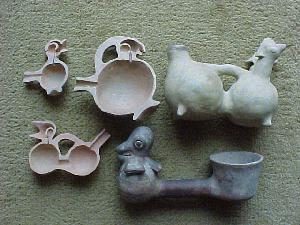
Based on research many of the vessels that have been found produce unique notes which can create binaural frequencies when played together. This synchronization of pure tones can increase relaxation; change the production of hormones in the body; reduce anxiety and stress, by creating a auditory illusion of the two tones creating a third tone. The production of binaural frequencies have also been known to help induce meditation and trance states, help with pain management, improve sleep, and reduce stress; these findings are discussed in the study “A Comprehensive Review of the Psychological Effects of Brainwave Entrainment”, Tina L Huang, PHD, and Christine Charyton, PHD.
The mechanism that creates the sound is a hollow ball with a circular hole that has a sharp edge. This sharp edge cuts the air that is blown into the mechanism which vibrates the air and produces the sound frequency. This air can be blown through with lungs or, depending on the vessel and culture, with water being moved from one container of the vessel to another. The diagram to the left shows the process visually. These vessels can have a single chamber or multiple chambers, single sound mechanisms or many of those too.

WHISTLING VESSELS CURRENT STATUS IN CULTURE

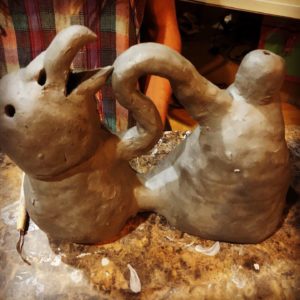
Now you can find a hand full of vessel makers on the internet, each one specializing in different niche techniques. At the popular site Shaman’s Market you can find many reproductions of vessels in various styles, though none of them are tuned in the ancient traditions. Don Wright creates vessels tuned to create binaural frequencies in ancient stylized forms, though you can only purchase his vessels in sets of 4 or more, find them at his site. Whistling vessels have been highly sought after by collectors, and you can also find many ancient examples for auction on many popular sites like ebay and Auctioneers in prices ranging from $400 to many thousand.
The use of whistling vessels in what we believe to be their intended purposes have been increasing within the last few decades. There are many shamans, medicine people, and others using these vessels for a wide assortment of purposes in current times. Some people use these vessels alone in sound healing sessions or ceremonies. Others prefer to add these to their ceremonial toolbox to use within their ceremony with other tools. As stated above, the use of these vessels with other instruments tuned similarly can produce many positive effects, which is one of the reasons they are used in ceremony.
Additionally, some of these vessels can be viewed to hold or invoke certain power animals, animal/god/ancestor spirits, or spirit animals into ceremony for healing or to magnify the power of ceremony. These uses and perspectives are based on intuitive conclusion and years of research. As with the major influences of pre-columbian culture such as animism, certain ceremonial tools can contain spirits which can be invoked with these sacred tools.
Overall, these instruments have had a interesting and dramatic blossoming into the current culture; from sacred objects to decorative containers and then back to sacred ceremonial tools within the last 1,000 years. Who knows what other ancient objects we will discover in the future that may have other purposes, but the discovery of whistling vessels, aka huaco silbadors, has been a awesome process to learn about and I appreciate the ability to share what I have learned with you!
